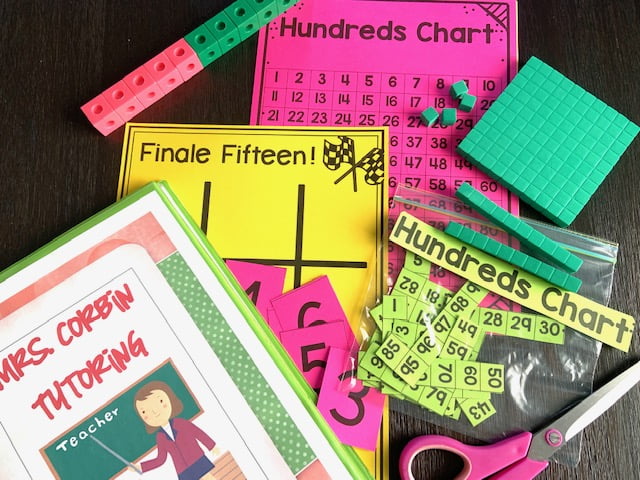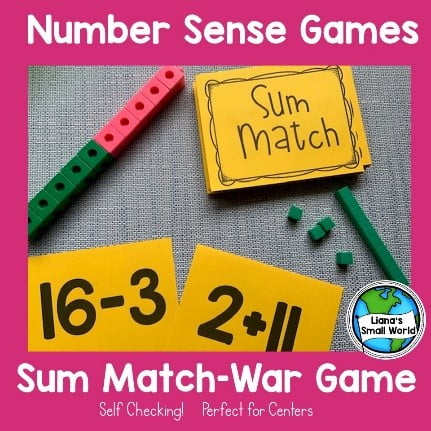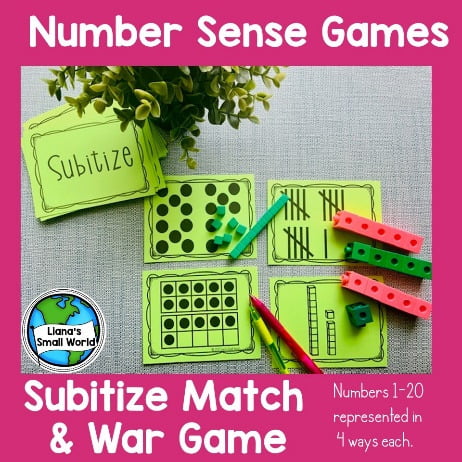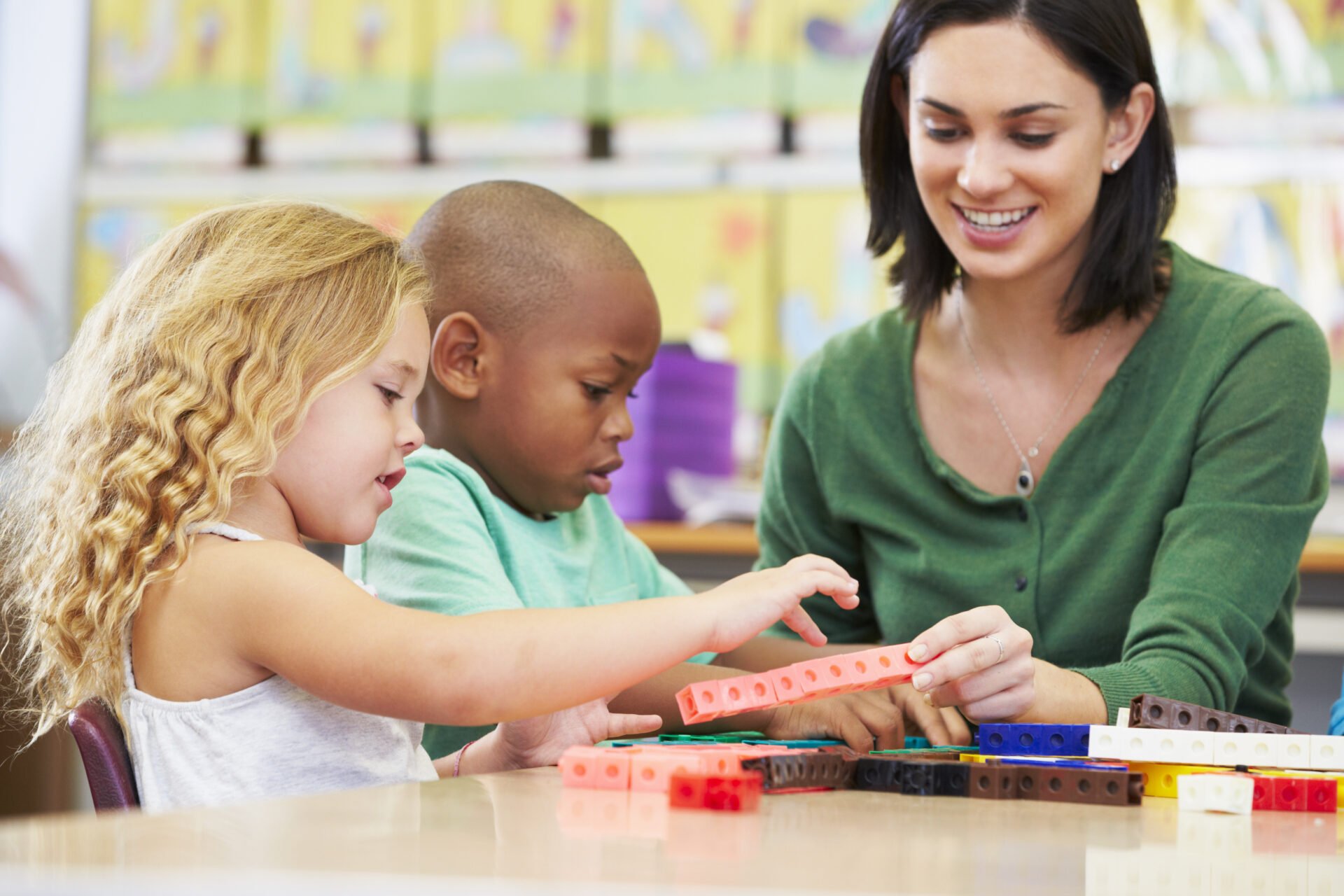Why is Number Sense Important?
True confessions here, I was a pretty terrible math student in High School. I remember sitting in Algebra class and the teacher reciting an enormous list of steps to solve the problem. I was trying, I mean, trying REALLY HARD! Taking notes furiously, trying not to let my brain shut down, even though NOTHING was making sense. You see, I am a “big picture” person. When I can see the whole idea, THEN all the random parts make sense, and I can understand with no problem.
However, unfortunately, this is NOT the way math is often taught. Most teachers find it easier to break down a skill into steps; possibly if they want to be extra helpful, find a tricky pneumonic device to help students; but little thought, or explanation is given to the “WHY” behind the algorithm. As a result, lots of students feel lost, begin to dislike math, and come to the conclusion, that they are not a “Math Person”. This is exactly what happens when number sense routines are not fostered from early on.

What is Number Sense Really?
As I am emphasizing the need for this with parents, they are often really confused. It was not “a thing” when I was going to school and probably wasn’t for most of these parents either. Number sense is a person’s ability to understand, relate, and connect numbers.
Students with a strong number sense, have a firm grasp in the value of numbers, see the relationship between numbers in a number sentence, and because of this, are flexible with the strategies they use to problem solve.
This means when they get stuck by one method, they are unfazed because they have a few more ideas in their back pocket. These students also, when solving a word problem, have a grasp on “how big” their answer should be. So, if they inadvertently use the wrong operation and come up with a vastly different answer, they have warning bells go off in their brain, and immediately revise their thinking.
In the last several years, I have slowly made it my goal that my students have a firm grasp of number sense before they leave my class, and it has made a HUGE difference in my math scores. So, what have I done differently to teach this?
1. Number Talks

It all started with stumbling onto a video by Sherry Parish, where she talked about implementing this. Take a look! (NUMBER TALK VIDEO) It was like attending one of the best PDs ever! Basically, a number talk is posing a grade-appropriate math problem and asking students to ONLY calculate the answer in their head. They are allowed to use any method possible – new methods are encouraged. When students have an answer, they simply signal with a thumbs up.
But in order to keep them thinking while they are waiting, they are asked to see if they can use another method to get the answer. They indicate this with an additional finger for each new method. When enough time has passed, the teacher begins to call on the students, who must then EXPLAIN their method. The emphasis is on the METHOD not necessarily the answer. If they do not have the correct answer, it can later be evaluated on what was correct about the thinking, and on what part(s) didn’t work.
- Here is an example: 298 + 57 =?
- For this example, most kids will attempt to use the standard algorithm in their head. They will say that 7 + 8 = 15, so there will be a 5 in the ones place and will carry the 1 into the tens place. Then they will say the 1+5+9 = 15, so there will also be a 5 in the tens place and will carry the 1 to the 100s place, leaving the answer 355. This is not easy for most kids to do correctly in their heads, but some will surprise you.
- HOWEVER, another student will figure out that they can decompose the 57 into 55 + 2. Then they can add the 2 to 298 making it 300. Then they already know the answer is 355.
When students see how easy it is to sometimes have an alternative to the standard algorithm, they are energized, and their creativity is sparked. They love this! Stay tuned to my blog for a more IN-DEPTH look into number talks – coming soon.

2. Manipulatives:
Numbers are really a pretty abstract thing. Some kids really struggle with abstract ideas. This is why it is always very important to start with concrete. Base ten blocks, play money, counters, Judy clocks, and Unifix cubes are your FRIENDS.
I’m sure you are already using these from time to time, but it is important to note that all new concepts you teach should ALWAYS start with the concrete. Once students grasp this, then move on to the representational models, like a tape diagram, drawing equal groups, or even a number line. When that is understood, then they can move on to equations and fully abstract ideas.

3. Number Lines
I used to think that number lines were only for kindergarten kiddos learning to count. But number lines can be used to teach SO MANY math concepts.
We can show addition AND subtraction, positive and negative numbers, and even multiplication and division. The best part of number lines is that they firmly demonstrate the relationships between the numbers. Here is an example for 2 – D = 1C
YES, regular use of number talks, manipulatives, and number lines can build incredible number sense in your students. So, give it a try! Which one would you like to try to add to your class routines and increase the depth of understanding in your math students?
How would you like to develop number sense while using super fun GAMES!? I got you!






0 Comments